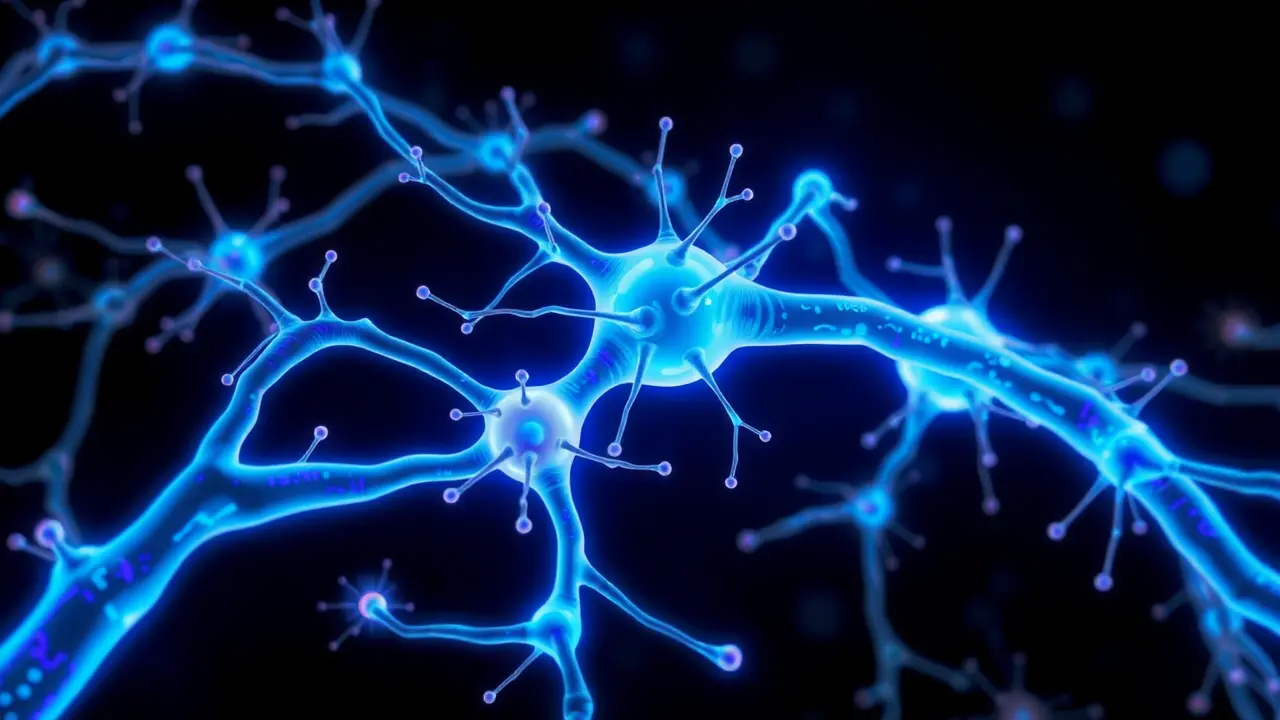
ScienceneuroscienceBrain-Computer Interfaces
Artificial neurons that behave like real brain cells
KE
Kevin White
8 hours ago7 min read1 comments
In a development that feels ripped from the pages of a near-future medical thriller, a team of researchers at the University of Southern California has engineered artificial neurons that don't just mimic the brain in a crude, digital way—they replicate its fundamental, chemical soul. This isn't your standard silicon-based AI chip crunching numbers; this is a leap into the wet, messy, and profoundly efficient world of ion-based diffusive memristors.Think of it less as building a computer and more as growing a synthetic synapse. These devices operate on the same principles as our own brain cells, using the flow of ions—charged atoms—to transmit and process information, mirroring the delicate dance of neurotransmitters across the synaptic cleft.This biological fidelity is the game-changer. Traditional computing, for all its power, is a energy-guzzling brute, forcing electrons through circuits in a binary on/off cascade that creates immense heat and demands colossal infrastructure.The human brain, by contrast, operates on a whisper of power, roughly 20 watts, enough to dimly light a single bulb, yet it orchestrates the symphony of consciousness, learning, and memory. The USC team's artificial neurons capture this elegance, offering a path to systems with massive energy and size advantages, potentially reducing the power consumption of complex neural networks by orders of magnitude.The implications for hardware-based learning systems are staggering. Imagine a processor that doesn't need to be programmed with endless lines of code but learns and adapts in real-time from its environment, its physical structure reorganizing and strengthening connections much like a child's brain learns to recognize a face.This moves us from the realm of artificial intelligence, which often feels like a sophisticated pattern-matching statistician, toward something approximating natural intelligence—a system capable of intuition, context-aware reasoning, and energy-efficient continuous learning. This breakthrough sits at the thrilling convergence of AI and biology, a field I've long been fascinated with, where the tools of CRISPR and advanced biotech meet the computational future.It evokes the pioneering work on neuromorphic computing, like IBM's TrueNorth chip, but where those were still fundamentally digital, this is analog and ionic, a closer emulation of life's own machinery. The potential applications extend far beyond just creating smarter chatbots.We could see the development of advanced, autonomous medical implants that can dynamically regulate drug delivery for conditions like epilepsy or Parkinson's by learning a patient's unique neural signatures. It could lead to prosthetics that don't just respond to muscle twitches but genuinely merge with the nervous system, providing real sensory feedback.However, this path is not without its profound ethical considerations, reminiscent of the debates we have in gene editing. Creating hardware that so closely mirrors the brain's operation forces us to confront questions about the nature of consciousness itself.If a system learns and adapts through physical processes analogous to our own, at what point does it cease to be a tool and become something more? The work, led by figures like Dr. J.Joshua Yang, is a testament to the power of interdisciplinary science, blending materials science, electrical engineering, and neuroscience. While still in the laboratory stage, the roadmap is clear.The next challenges will be scaling these artificial neurons into dense, interconnected networks that can rival the complexity of even a small mammalian brain and ensuring their long-term stability. But the direction is set: the future of computing may not be in colder, faster silicon, but in warmer, slower, and infinitely more brilliant systems that finally bridge the gap between the machine and the mind, potentially transforming everything from edge computing to our understanding of ourselves.
#featured
#artificial neurons
#brain cells
#memristors
#neuromorphic computing
#brain-like AI
#ion-based devices
Stay Informed. Act Smarter.
Get weekly highlights, major headlines, and expert insights — then put your knowledge to work in our live prediction markets.
Related News
© 2025 Outpoll Service LTD. All rights reserved.
